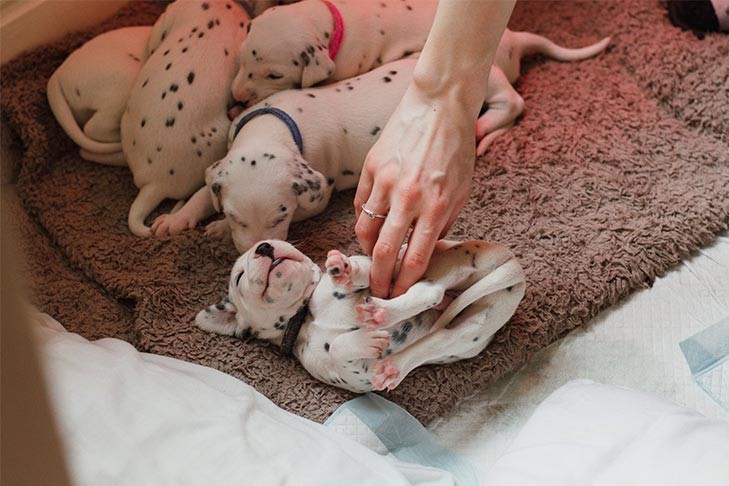Dogs, like humans, are born with an umbilical cord connecting them to their mothers. This cord provides vital nutrients during gestation. So, wouldn’t that mean dogs have belly buttons too? The answer is yes, but they’re often much harder to spot than human navels. Let’s explore why.
The Science Behind Belly Buttons in Mammals
To understand why dog belly buttons are so elusive, we need to delve into mammalian reproduction. There are three types of mammals: marsupials (like kangaroos), monotremes (like platypuses), and placental mammals (like humans and dogs). Only placental mammals develop a placenta, a temporary organ that nourishes the fetus via the umbilical cord.
This cord leaves a scar after birth, which we call the belly button or umbilicus. In humans, this scar often forms an “innie” or “outie.” But why the difference in appearance between human and canine belly buttons?
The Difference Between Human and Dog Belly Buttons
When puppies are born, they’re enclosed in a fluid-filled sac connected by the umbilical cord. The mother dog instinctively chews off this cord, leaving a small remnant that dries up and falls off within a few days. This process results in a much smaller, flatter scar than in humans. A human doctor clamps and cuts the umbilical cord, leaving a more pronounced stub that eventually heals into a more noticeable navel.
Furthermore, a dog’s thick fur often obscures the belly button. Imagine trying to find a small, flat scar hidden beneath a dense layer of hair!
Locating Your Dog’s Belly Button
Despite being inconspicuous, you can usually find your dog’s belly button. Look for a small, vertical scar or a slight wrinkle in the skin along the midline of the abdomen, just below the ribcage. Sometimes, a swirl of fur might mark the spot. Gently palpating the area might reveal a firm area of scar tissue.
However, if your dog shows discomfort when you touch their abdomen, consult a veterinarian. While a dog’s belly button is usually just a harmless scar, a protruding navel can sometimes indicate an umbilical hernia, a condition requiring veterinary attention.
The Significance (or Lack Thereof) of a Dog’s Belly Button
Unlike human belly buttons, which can be a source of fascination or even fashion, a dog’s belly button serves no real purpose after the umbilical cord falls off. It’s simply a reminder of their time in the womb. While you likely won’t spend much time contemplating your dog’s navel, knowing it’s there underscores the shared biological heritage between humans and our canine companions. Both start life connected to our mothers via this vital lifeline.
